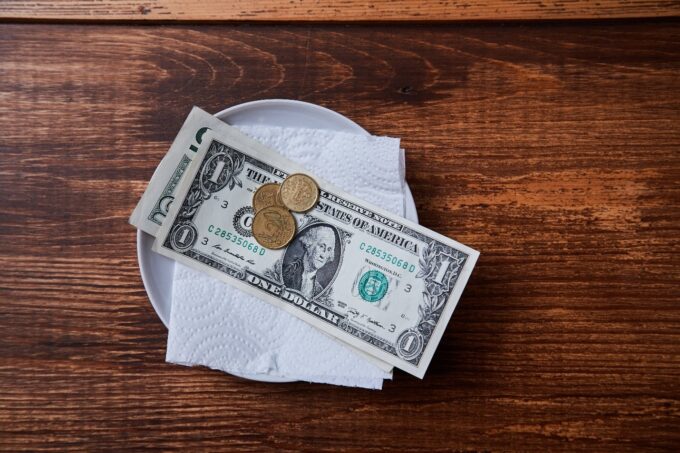By Jeff Derderian /Emmy Nominated Reporter
In recent years, tipping has evolved from being a customary practice in certain industries to a controversial and often confusing issue. The rise of digital payment methods, the pandemic’s impact on service industries, and cultural shifts have all contributed to the current state of tipping, leading many to question when, where, and how much to tip—or whether to tip at all. Jeff Derderian explores the complexities of tipping in today’s world and provides guidance on navigating this often tricky aspect of social etiquette.
The Evolution of Tipping
Tipping originated in Europe and made its way to the United States in the 19th century. Traditionally, it was a way to reward good service in restaurants, bars, hotels, and similar settings. Over time, tipping norms became deeply ingrained in American culture, with expected percentages and standard practices developing across various industries.
However, the landscape of tipping has changed dramatically in recent years. The gig economy, digital payment systems, and changing labor laws have all played a role in reshaping tipping practices. Additionally, the COVID-19 pandemic has heightened awareness about the financial struggles of service workers, further complicating the tipping narrative.
The Impact of Technology
Digital payment platforms have revolutionized the way we tip. Many services now include a tipping option as part of the payment process, often with suggested amounts. This has led to a phenomenon known as “tip creep,” where the suggested tip percentages have gradually increased. In some cases, customers feel pressured to tip more than they traditionally would, simply because the digital interface makes it easier.
On the other hand, the convenience of digital tipping has made it more accessible for consumers to show their appreciation for good service. For instance, ride-sharing apps like Uber and Lyft have integrated tipping features, encouraging users to tip their drivers, which was not initially a common practice in this new industry.
Cultural Shifts and Expectations
Tipping norms vary widely across cultures, and globalization has influenced tipping behaviors in diverse ways. In some countries, tipping is seen as an insult, implying that workers are not paid adequately. In others, it is an expected part of the service industry’s income structure. As people travel more and cultures intermingle, these differences can lead to confusion and discomfort.
In the United States, tipping has traditionally been a way to supplement the often low wages of service workers. However, there is a growing movement advocating for a living wage, which could reduce the reliance on tips. Some businesses have even adopted a no-tipping policy, opting to pay their employees higher wages instead. This has sparked debate about the effectiveness and fairness of such practices.
To Tip or Not to Tip: Guidelines for Different Industries
Given the evolving nature of tipping, here are some guidelines from some experts in this area to help navigate when and how much to tip in various situations. Obviously these are just suggestions. I feel people should also do what they think is best for the service received.
- Restaurants: In the United States, a tip of 15-20% of the total bill is standard for good service. Some upscale restaurants have started including a service charge, which usually replaces the need for an additional tip. In other countries, tipping practices vary, so it’s essential to research local customs.
- Cafés and Coffee Shops: Tipping is often appreciated but not mandatory. A small tip, such as rounding up to the nearest dollar or leaving some change, is common for counter service.
- Ride-Sharing and Taxis: A tip of 10-15% is customary for taxi drivers. For ride-sharing services, the apps typically suggest tip amounts, and tipping $1-3 for short rides or 10-15% for longer rides is appropriate.
- Hotels: Tip the bellhop $1-2 per bag and the housekeeper $2-5 per night, especially if you have an extended stay. Tipping the concierge for exceptional service is also appreciated, typically $5-20 depending on the request.
- Delivery Services: For food delivery, a tip of 10-20% is standard. For other delivery services, such as groceries or packages, a tip of $2-5 is generally appreciated, especially for heavy or cumbersome deliveries.
- Salons and Spas: A tip of 15-20% is customary for hairdressers, barbers, and spa services. Some establishments may include a gratuity in the bill, so check before tipping.
Navigating No-Tip Establishments
Some businesses have adopted a no-tipping policy, often advertising higher wages for their employees to compensate. In these establishments, tipping is not expected, and attempting to tip may even be discouraged. It’s important to respect the business’s policy and trust that the employees are being fairly compensated.
Tipping remains a nuanced and evolving practice. As consumers, it’s crucial to stay informed about current trends and expectations, while also being considerate of the individuals providing the services. By understanding the complexities of tipping and adapting to new norms, we can ensure that our practices remain fair and appreciated.
